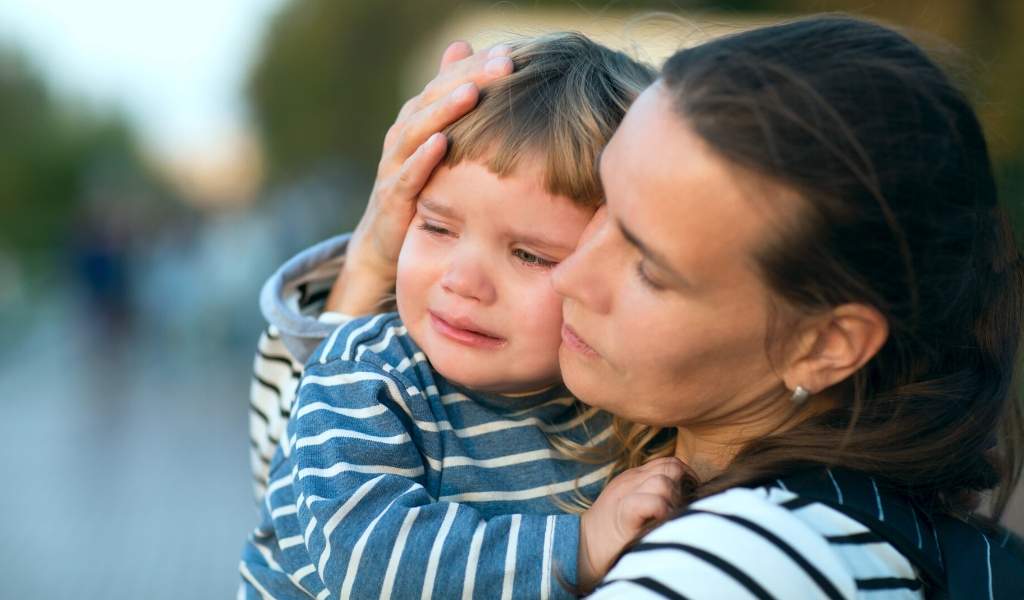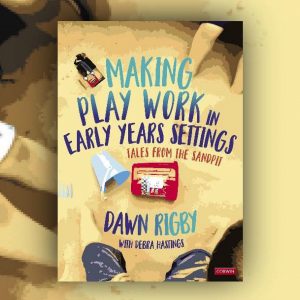Interactions are such a vital part of our lives. During the last two years, we have had to limit our interactions and this has caused a lot of distress, isolation and even mental health issues for many people. Maybe now, more than ever, we are starting to truly understand the importance of interaction and how vital it is to us as human beings.
Here are early years’ author, Dawn Rigby’s top tips for developing interactions with young children:
Connecting with each other has been shown to be of vital importance to our mental health and to the mental health of our children. To have those meaningful interactions with children, we need to be truly present with them, in that moment, with the attention on that interaction and not on outcomes – next steps will be reached as we build relationships and understand our children.

For young children, so much of their learning starts with an interaction. We learn the rules of communication by the interactions we have with another person – babies learn the rules of language and communication skills by the back-and-forth responses they receive – the serve and return effect.
They learn that a person is interested in them and cares about them; it is joyful and so we see babies smiling and cooing with the enjoyment of engaging with another person. Yes, interaction is vital to our sense of belonging and wellbeing.
When we listen, really listen to a child we show them that we are someone who is interested and who cares about what they have to say. Child-adult relationships that are responsive and attentive—with lots of back-and-forth interactions—build a strong foundation in a child’s brain for all future learning and development.
Take turns – and allow the child to speak. It can be tempting to do all the speaking for them – but wait! Don’t rush to fill a pause, this could just be thinking and processing time for the child. We need to be mindful of this time – this shows patience and understanding because you want to keep the interaction going back and forth.

Supporting and encouraging rewards a child’s interests and curiosity as never getting a return can be stressful for a child. When you return a serve, children know that their thoughts and feelings are heard and understood. Serve and return interactions shape the brain. When a child makes an attempt at communication, and an adult responds appropriately – with eye contact, words or a gesture – neural connections are built and strengthened in the child’s brain that support the development of communication, social and emotional skills.
No wonder, therefore, that interaction is such a crucial part of our lives and enables us to develop attachments and emotional connections that enrich our lives. I feel passionate about this and it is a large part of my work: spending time with the children, being available to them, building relationships through sensitive interactions with them.
It is particularly important, I feel, when we are responding to a child who is experiencing a strong emotion as we need to make sure that we are emotionally available to that child and have noticed that they need a connection to us in order to settle the nervous system, develop co-regulation and to activate the brain.

This is where sensitive interaction is crucial for giving that child the support they need. Children need attuned and responsive adults, who they know, care and value them, so co-regulation can occur.
This requires practitioners to develop a connection to the children in their care – if a child does not feel connected to you, they will not respond to you. They need to trust you and know that you are there, to be emotionally available. This takes time to develop and playful interactions with the children are the perfect way to start creating connections to the children in your setting.
One of the joys, for me, about working with young children is the interaction I am privileged to have with them. Interaction with the children has become such an important part of my work in early years and has led me to develop the role of play partner – a partner in the true sense of the word, taking the lead from them, following their interests, engaging fully in the process of their play.
If we all considered for a moment why we chose to work in the early years, I am sure we would all answer, to be with the children (I can’t imagine any of us saying for the paperwork!) So, if we chose the job to be with the children, then being with them, communicating with them and interacting with them is key. Playful interactions ensure strong relationships.
Dawn Rigby is an early years professional, author and consultant. Originally trained as a Montessori teacher, Dawn has Early Years Teacher Status, a level 3 in speech and Language Development, a Postgraduate Certificate in Education and a Masters Degree from the University of Roehampton. She is currently an early years tutor at Guildford College. Her latest book is ‘Making Play Work in Early Years Settings‘.
